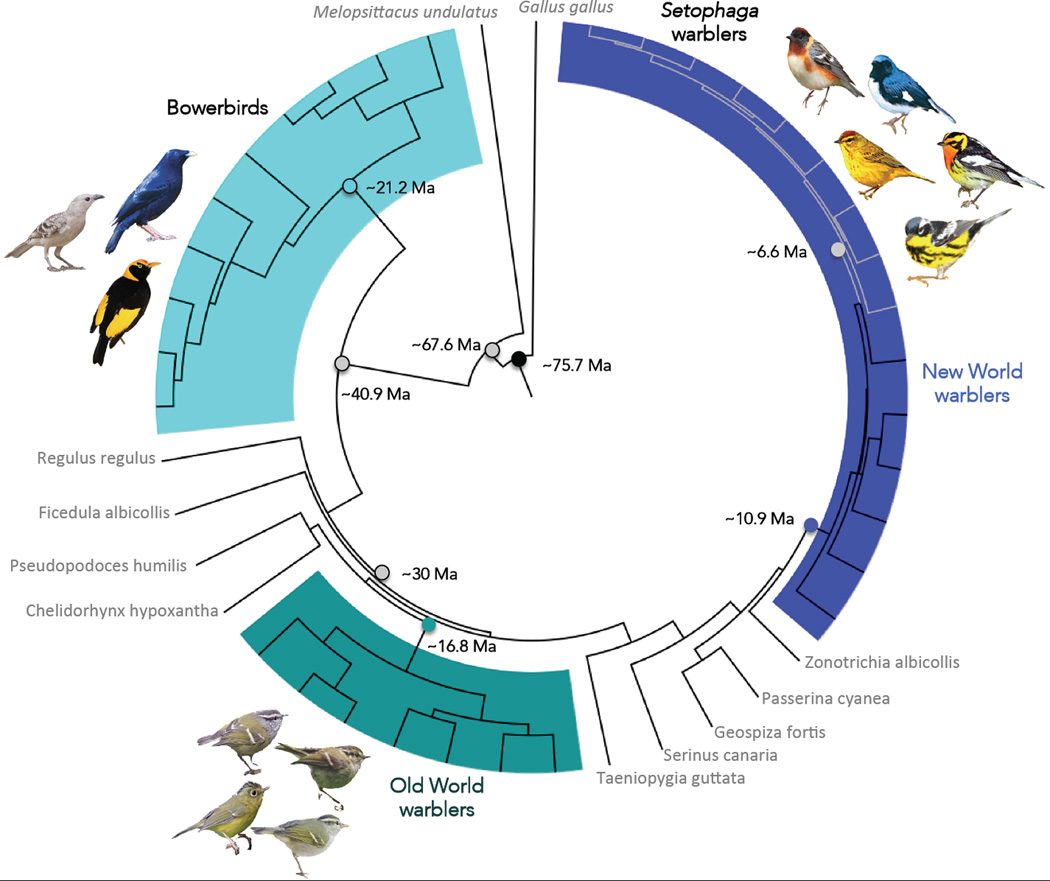Figure 1.
Time calibrated phylogeny of the New World warblers, Old World warblers and Bowerbirds used in this study. Branch lengths are proportional to time. Males from a few species for each clade are illustrated. Species with names in grey are used as outgroups in our analysis. Grey branches within the New World warblers indicate species belonging to Setophaga. Mean node ages and corresponding 95% confidence intervals from the BEAST analysis are as follows: Setophaga warblers 6.62Ma [5.41–7.78]; New World warblers 10.89Ma [9.28–12.66]; Old World warblers 16.77Ma [14.30–19.51]; Bowerbirds 21.22Ma [17.69–24.58]; Last common ancestor to New and Old World warblers 30.02Ma [26.9–33.15]; Last common ancestor to bowerbirds and the rest of the passerines 40.9Ma [36.95–44.75]; Split between passerines and Psittaciformes 67.63Ma [64.44–72.42]; Root node (Black) 75.7Ma [66.44–86.71].

